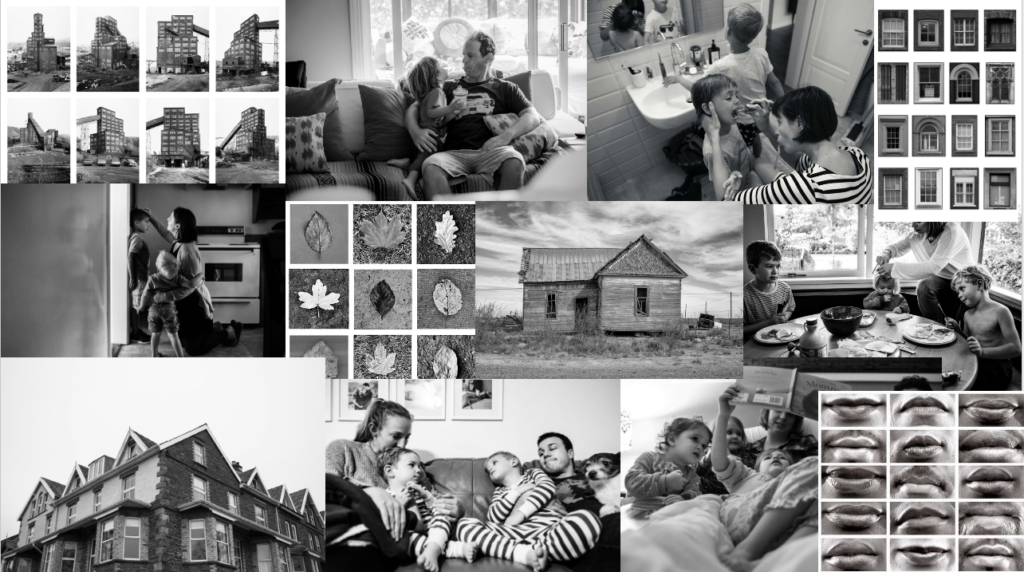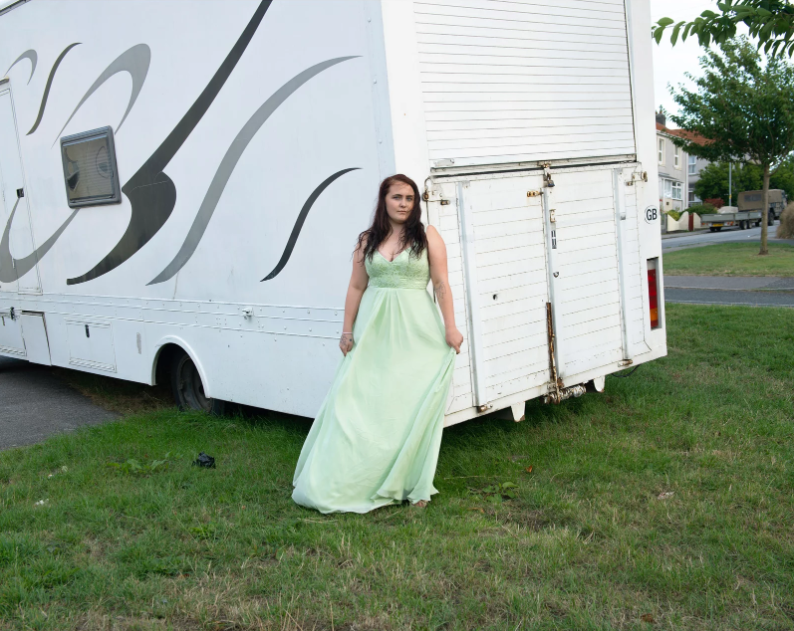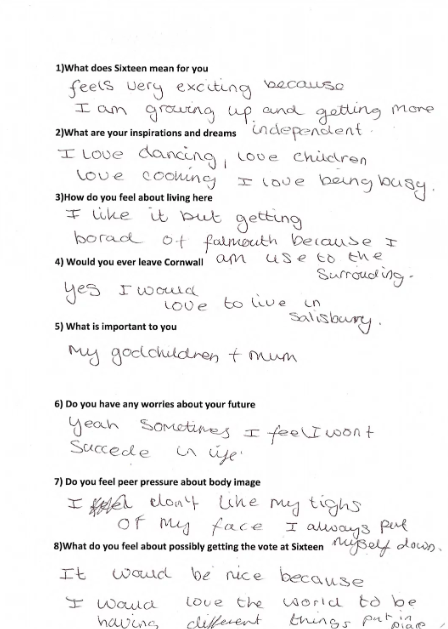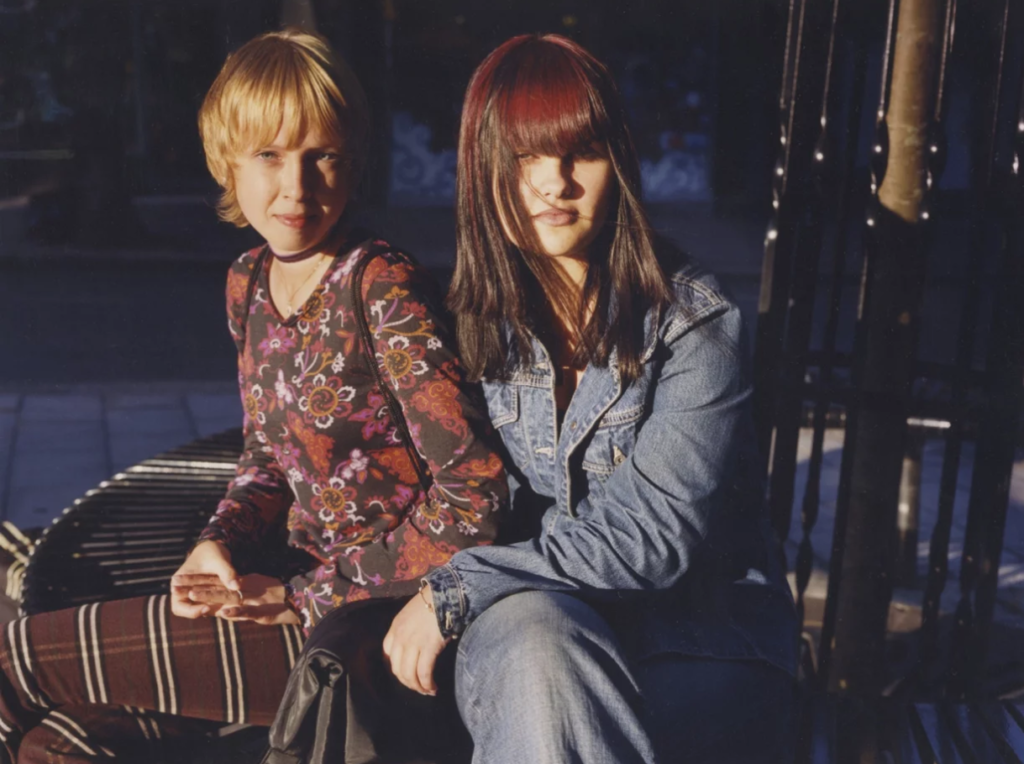
My main inspiration for this photoshoot is Justine Kurland’s ‘Girl Pictures’ book. I believe that this book defines feminism very well due to every photo being very unique and capturing different types of people.
Justine Kurland’s main inspiration for this book was from a young girl in which Justine used to date her father. The girl was sent to live with her father after her mother kicked her out for skipping school and doing drugs. Justine then formed the idea of a photoshoot based on ‘alyssum as a teenage runaway’. In which she scouted for models outside various high schools. She also gained inspiration from a TV show about the tales of teenage delinquency.
Justine Kurland’s Girl pictures bring a sense or nostalgia. Every girl in each photo have their own story however come together to live a similar lifestyle. They live without a care in the world, and are truly living their teenage years. Therefore, many of the images in Girl Pictures were taken outside in locations that feel desolate or easy to overlook. They were often staged under bridges or beyond fences or on the sides of highways; places that feel synonymous with warnings.
Image Analysis:
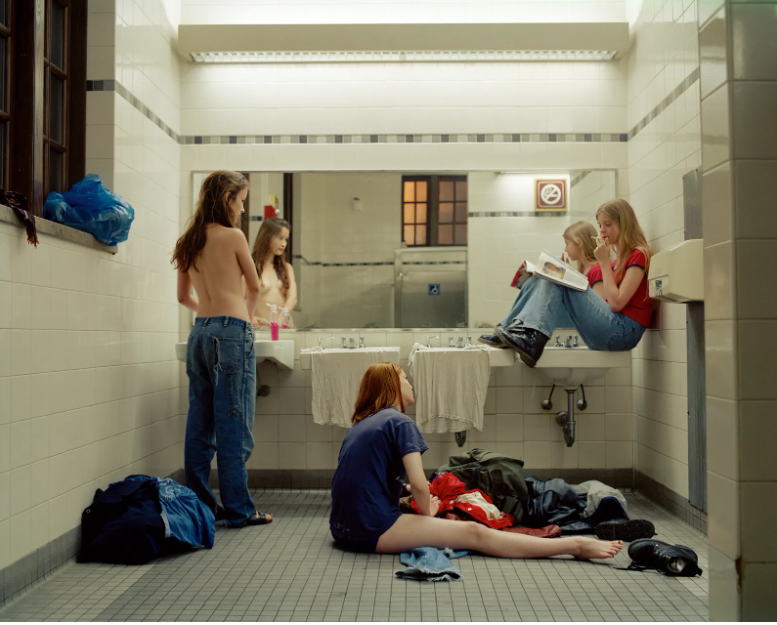
In Justine Kurland’s image, Femininity is shown throughout by a topless girl standing in front of the mirror. This is a defining aspect of the image as it is the anatomy in which all girls have, however, many people view this as being provocative and vulnerable in front of a camera. However, Kurland has composed this image so that you are unable to see the camera and is
Whereas Justine Kurland portrays this image as empowering, as the subject has confidence within her own body to show it off . Another aspect within this image is the bright pink hand soap on the top of the sink counter top which is accompanied by a girl sat near it with a glossy pink magazine which she is reading. Femininity is shown further through the girl sat on the bathroom floor next to a bag which is spewing out with clothes, who looks like she is having trouble picking out her outfit. the image seems to have been taken at dusk due to the orange light shining through the window of the bathroom. However, the bathroom is light up very bright from the lights in the ceiling and above the mirror.
Celestial Echoes- Bye-Bye Baby- By Michelle Sank

Another artist that I have taken inspiration from is Michelle Sank , with her photo series ‘bye-bye baby’ and ‘Celestial Echoes’. These images deal with the notion of developing adulthood within the British society today. Bye-Bye Baby is exploring the way young boys and girls interpret their understanding of masculinity and femininity. Having left the purity of their childhood worlds, they seem to take on the trappings of the grown ups they mimic and the status set out in popular culture and the media. Celestial Echoes continues with this theme looking at this phenomenon within older adolescent girls.
Image Analysis:
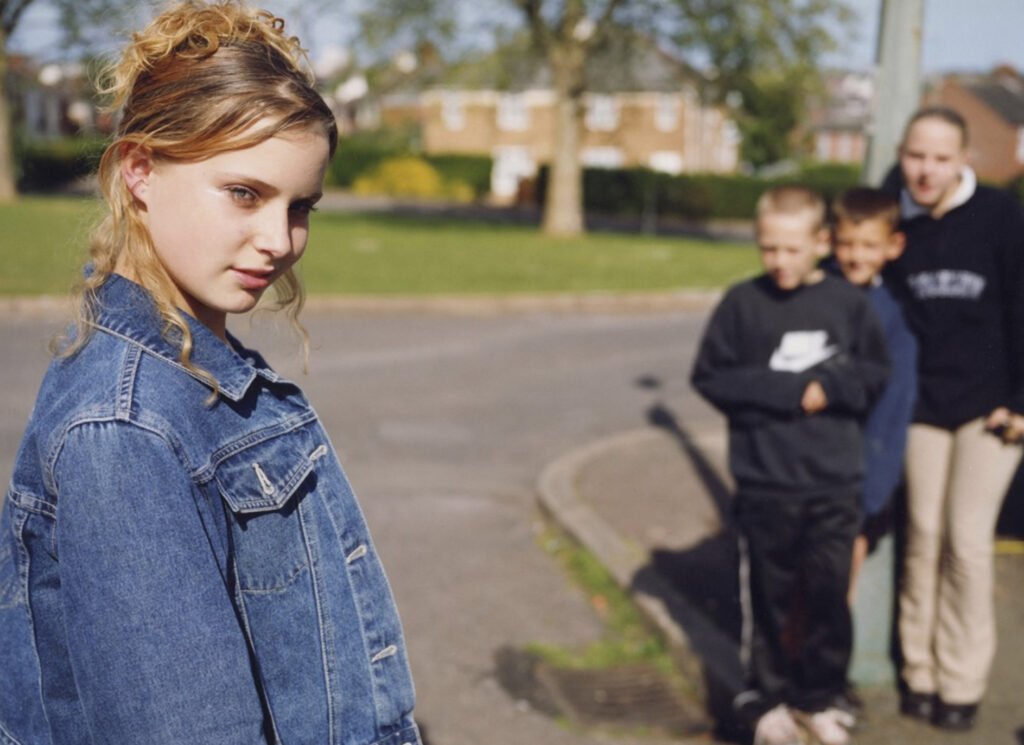
The image above by Celestial Echoes is untitled, however, I think this is a very effective image which captures youth and femininity very well. In the foreground of the image, there is a young girl looking down at the camera which creates a sense of power. The lighting in the picture seems to be natural, but there is more light coming in from the left shown through the highlighting of the outer corner of her eye and the shadow which is created from her nose on her right eye. Celestial Echoes has also added bokeh (blurring) to the background which was most likely done by changing her aperture of her camera. Femininity is also shown through the young boys in the background of the image. By placing the girl in the foreground of the picture she can be viewed as more powerful, whereas the boys are perceived as smaller and less important.


